Early Life and Formative Years
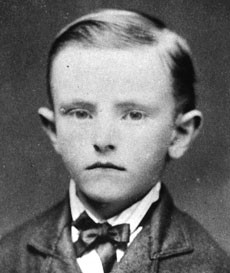 Calvin Coolidge as a baby
Calvin Coolidge as a baby
Born on Independence Day, July 4th, 1872, in the humble Vermont hamlet of Plymouth Notch, John Calvin Coolidge entered the world as the United States celebrated its 96th year. While christened John Calvin Coolidge after his father, he became affectionately known as Calvin, or simply “Cal,” within his family circle. Plymouth Notch, cradled in the Green Mountains, was more than just his birthplace; it was a sanctuary to which John Calvin Coolidge would consistently return throughout his life, drawing strength and solace from its familiar landscapes. This enduring connection to his roots would become a defining aspect of his public image, particularly during his presidency, and ultimately led to the preservation of his homestead as a memorial by his devoted friends.
John Calvin Coolidge‘s father, also named John Calvin Coolidge, was a man of notable competence and moral rectitude, deeply admired and respected by his son. The younger Coolidge consistently sought his father’s approval, striving for achievements that would bring him pride. Adding an intriguing dimension to his heritage, John Calvin Coolidge acknowledged a trace of Native American ancestry on his father’s side, a fact he noted with interest. Later, as President, he would champion the cause of Native Americans by signing legislation granting them U.S. citizenship. While not wealthy, Coolidge’s father was a respected figure in Plymouth Notch, engaged in farming, local business ventures, and serving as the community’s postmaster. His integrity and standing earned him the trust of his neighbors, leading to years of service in local and state government. In 1900, his service on Governor Stickney’s military staff earned him the honorary title of “Colonel,” a distinction that remained with him for life.
His mother, Victoria Josephine Moor Coolidge, was described as a woman of beauty and sensitivity, named after two empresses. She and John Coolidge Sr. were childhood sweethearts from Plymouth Notch, marrying on May 6, 1868. John Calvin Coolidge remembered his mother as delicate and possessing a poetic spirit, writing of her love for “purple sunsets and watching the evening stars.”
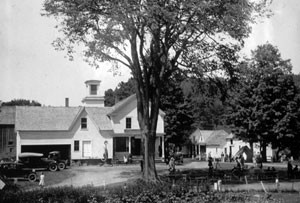 Young Calvin Coolidge with his mother
Young Calvin Coolidge with his mother
John Calvin Coolidge‘s upbringing in Plymouth Notch was typical of rural life in that era. He reflected on its character, noting, “Country life does not always have breadth, but it has depth. It is neither artificial nor superficial, but is kept close to the realities.” Starting school in September 1877, near his family home, his academic performance was solid, though unremarkable. Even in his youth, John Calvin Coolidge displayed traits of shyness and physical fragility, yet he was a dependable child, consistently ensuring the wood box was filled, contributing to farm work, and participating in community activities like dances, though he preferred observing to joining in. The maple sugar season was a highlight of his year, where he reportedly excelled at extracting sap from maple trees.
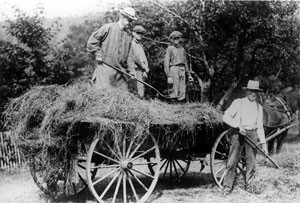 Coolidge's childhood home
Coolidge's childhood home
Tragedy struck young John Calvin Coolidge in March 1885 with the death of his mother when he was just twelve. His father and grandmother provided support, but the loss profoundly affected him. “The greatest grief that can come to a boy came to me,” he wrote, “Life was never to seem the same again.” Like many men of his time, John Calvin Coolidge deeply revered his mother’s memory. His autobiography reveals a profound and lasting love for her, and he carried a locket with her portrait until his own passing. Five years later, another sorrow followed with the death of his sister Abigail, or Abbie, whose favorite quote reflected a similar dedication to purpose: “Count the day lost / Whose low descending sun / Sees from thy hand / No worthy action done.”
In September 1891, his father remarried Caroline Athelia Brown, a local schoolteacher. Carrie, as she was known, was a kind and supportive woman who had known John Calvin Coolidge since childhood and treated him as her own son. He later wrote in his autobiography, “For thirty years, she watched over me and loved me…”
Education at Black River Academy
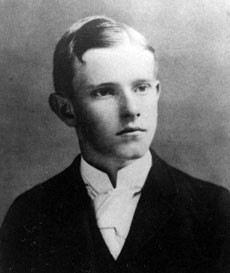 Black River Academy
Black River Academy
At the age of thirteen, in February 1886, John Calvin Coolidge embarked on a new chapter, enrolling at Black River Academy in Ludlow, a preparatory school. He described it as his “first great adventure,” a move from “darkness into the light.” The Baptist-affiliated academy, with around 125 students, had a personal connection for John Calvin Coolidge, as his parents and grandmother had also attended.
John Calvin Coolidge pursued the classical course of study, emphasizing Latin, Greek, history, and mathematics, coursework he believed instilled crucial ideals for life’s direction. It was during his first term that he began a lifelong study of the U.S. Constitution, later praising it as unparalleled in promoting human progress and happiness. The cost of his education was modest, around $7.00 per term for tuition and $3.00 per week for room and board.
Graduating from Black River Academy on May 23, 1890, in a class of nine, John Calvin Coolidge delivered his first notable public address at the ceremony in Hammon Hall. His topic, “Oratory in History,” explored the influence of public speaking on world events. While initially planning to attend Amherst College that fall, an illness led him to spend a preparatory spring term at St. Johnsbury Academy instead.
In August 1891, John Calvin Coolidge and his father witnessed President Benjamin Harrison at the dedication of the Bennington Battle Monument. This encounter with the nation’s leader left a lasting impression. “As I looked on him and realized that he personally represented the glory and dignity of the United States,” he recalled, “I wondered how it felt to bear so much responsibility and little thought I should ever know.”
Amherst College and Shaping Principles
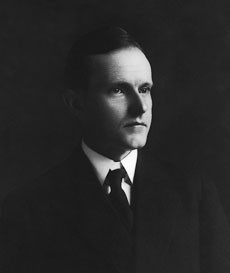 Amherst College in Coolidge's time
Amherst College in Coolidge's time
September 17, 1891, marked another pivotal moment as nineteen-year-old John Calvin Coolidge matriculated at Amherst College. His Amherst years were crucial in shaping his intellectual growth, personal development, and career aspirations. Reflecting on education’s purpose, he later stated, “Education is to teach men not what to think but how to think.” John Calvin Coolidge learned from esteemed professors who were not just instructors but “men of character,” whose lessons deeply resonated with him. Professor Charles E. Garman, who taught philosophy, profoundly influenced John Calvin Coolidge, reinforcing his belief in the common person and the dignity of labor, and broadening his perspective on life. Crucially, Garman instilled in John Calvin Coolidge “the law of service,” emphasizing contribution over personal gain, a principle that would guide his entire career in public service.
While somewhat reserved due to his shyness, John Calvin Coolidge participated in Amherst’s social scene and formed significant relationships, including with future financier Dwight Morrow. These connections, along with other Amherst alumni like wealthy Boston merchant Frank W. Stearns, would later become vital supporters and advocates for his political career. Stearns, in particular, became a close friend and key backer.
John Calvin Coolidge joined the Phi Gamma Delta fraternity, maintaining a lifelong connection. Recognizing his developing oratorical talent, his classmates selected him as Grove Orator for their commencement, a role that called for humor and wit, which he delivered to appreciative laughter. On June 26, 1895, John Calvin Coolidge graduated cum laude with an A.B. degree.
During his time at Amherst, John Calvin Coolidge achieved academic distinction by winning a national essay contest sponsored by the National Society of the Sons of the American Revolution. His essay, “The Principles Fought for in the American Revolution,” initially won the silver medal at Amherst and then the prestigious national gold medal. This recognition highlighted his scholarly abilities and writing skills, which would become evident in his later public writings. John Calvin Coolidge valued this essay so much that he included it in his 1924 collection of addresses and writings, The Price of Freedom.
After graduation, John Calvin Coolidge returned to Plymouth Notch to work on his father’s farm during the summer. He had decided to pursue a legal career but opted to learn through apprenticeship at a law firm rather than attending law school, a common and cost-effective practice at the time. Fortuitously, he secured a position at the Northampton, Massachusetts, firm of Hammond and Field, both Amherst alumni. This move was also a return to his ancestral roots, as his family had resided in Massachusetts for 150 years before settling in Vermont.
Even while at college, John Calvin Coolidge‘s aspirations extended beyond personal wealth. Reflecting Garman’s influence, he wrote to his father, expressing his desire to “live where I can be of some use to the world and not simply where I should get a few dollars together.” His new home in Northampton and Massachusetts would indeed offer him ample opportunities for public service in the years to come.
Establishing Himself Professionally and Personally
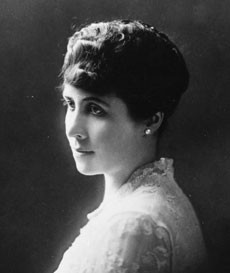 Coolidge in his early law career
Coolidge in his early law career
John Calvin Coolidge began his legal apprenticeship on September 23, 1895. Under the guidance of Hammond and Field, he diligently applied himself, mastering his new profession. Just before his 25th birthday in 1897, he was admitted to the Massachusetts bar. On February 1, 1898, he launched his own law office in Northampton. Building trust and confidence, John Calvin Coolidge developed a strong reputation and gradually expanded his practice, eventually becoming attorney for the Springfield Brewery and counsel for the Nonotuck Savings Bank, Northampton’s largest savings institution. He was known for his preference for settling cases out of court, saving clients time and expense, and willingly offered assistance to all, including those with limited means. His modest fees were a point of friendly contention with his fellow lawyers.
 Grace and Calvin Coolidge wedding photo
Grace and Calvin Coolidge wedding photo
By the turn of the century, John Calvin Coolidge was a respected lawyer and active in civic life. The final piece of his personal life fell into place when he met Grace Anna Goodhue, a teacher at the Clarke School for the Deaf. Their connection was immediate, and after successfully courting her and overcoming initial objections from her mother, they married on October 4, 1905, at Grace’s family home in Burlington, Vermont.
Grace was undeniably the love of John Calvin Coolidge‘s life. He eloquently wrote, “A man who has the companionship of a lovely and gracious woman enjoys the supreme blessing that life can give. And no citizen of the United States knows the truth of this statement more than I.” He cherished her presence, and her outgoing and warm personality perfectly complemented his reserved nature. “We thought we were made for each other,” he observed. “For almost a quarter of a century she has borne with my infirmities, and I have rejoiced in her graces.” The Coolidges established their home in a rented duplex at 21 Massasoit Street.
Their family expanded with the arrival of their first son, John, on September 7, 1906, who lived a long life until May 2000. Their second son, Calvin Jr., born on April 13, 1908, tragically passed away in July 1924, during the presidential election campaign. This loss deeply affected John Calvin Coolidge. “When he went,” he wrote with profound sadness, “the power and the glory of the Presidency went with him.” Within two years, he also mourned the passing of his elderly father.
Entering the Political Arena
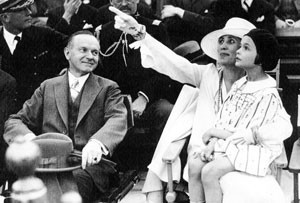 Coolidge taking the oath of office as Governor
Coolidge taking the oath of office as Governor
Politics was ingrained in John Calvin Coolidge‘s life from his earliest days. His father was elected to the Vermont legislature shortly after his birth. As a child, John Calvin Coolidge visited his father at the state capitol in Montpelier, even sitting in the Governor’s chair. He also attended town meetings, observing his father’s engagement with community issues. Reflecting on his path to the presidency, John Calvin Coolidge wrote to his father, “I am sure I came to it largely by your bringing up and your example.” These early experiences instilled in him a deep respect for the democratic process and the average citizen. “There is something in every town meeting, in every election, that approaches very near to the sublime,” he later remarked, underscoring his belief in local government and the importance of civic participation. His faith in the judgment of the people was unwavering. “In time of crisis,” he wrote, “my belief that people can know the truth, that when it is presented to them they must accept it, has saved me from many of the counsels of expediency.”
The significance of elections registered early with John Calvin Coolidge. He recalled the 1880 presidential campaign between Garfield and Hancock, where his father linked the outcome of the election to his ability to buy candy. Garfield’s victory meant John Calvin Coolidge got his treat.
In 1888, while at Black River Academy, he experienced his first presidential campaign, celebrating Harrison’s victory over Cleveland. By the 1892 election, John Calvin Coolidge joined the Amherst Republican Club and participated in campaign parades, learning the sting of political defeat when his candidate lost. In 1893, he delivered his first Fourth of July speech at the request of his Plymouth neighbors, declaring, “While that flag floats, our rights shall be preserved.”
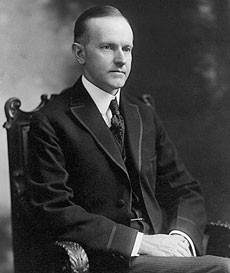 Coolidge as Mayor of Northampton
Coolidge as Mayor of Northampton
Upon leaving Amherst, John Calvin Coolidge affirmed, “I’m only sure of one thing—that I’m a Republican.” His Republicanism was rooted in a deep conviction in the party’s principles, particularly the protective tariff aimed at fostering American industry. While a loyal Republican throughout his career, he was never fiercely partisan. He maintained friendships across party lines, exemplified by Al Smith, the 1928 Democratic presidential candidate, who penned a thoughtful obituary of John Calvin Coolidge titled “A Shining Public Example.” John Calvin Coolidge believed political parties were essential for accountability in the American system.
Hammond and Field encouraged John Calvin Coolidge to engage in Northampton politics. Despite his reserved nature, he connected with ordinary citizens, including James Lucey, a Democratic cobbler he befriended in college. Lucey became a friend and political mentor, assisting John Calvin Coolidge in local politics. In a gesture reflecting his character, John Calvin Coolidge‘s first letter from the White House was to Lucey, acknowledging, “…if it were not for you, I should not be here…” He never forgot those who supported him.
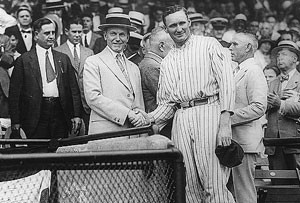 Coolidge as a State Senator
Coolidge as a State Senator
John Calvin Coolidge‘s political involvement began in 1895, assisting Henry P. Field’s mayoral campaign. In 1896, he participated in the pivotal presidential election between Bryan and McKinley, writing newspaper articles against Bryan and defending the gold standard in debates, to his father’s approval. He also received his first political appointment as an alternate delegate to a state senatorial nominating convention. His path was set; he was becoming a politician.
Ascending the Political Ladder
When asked about his hobby, John Calvin Coolidge famously quipped, “Holding office.” He ran for public office seventeen times (excluding primaries), a high number due to annual elections in Massachusetts at the time. This extensive record of seeking public approval is perhaps unparalleled among U.S. presidents.
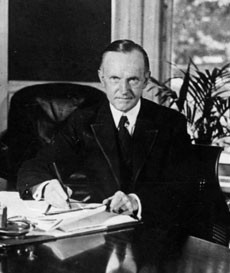 Coolidge as Lieutenant Governor
Coolidge as Lieutenant Governor
John Calvin Coolidge was a skilled and popular politician, consistently winning votes, including attracting Irish Democratic voters. He managed his early campaigns independently and won all but one race, a school committee seat in 1905. His campaigns were always positive and issue-focused.
Voters perceived John Calvin Coolidge as a man of integrity, competence, and trustworthiness. His reputation for honesty and reliability proved invaluable when he became president and had to address the scandals of the Harding administration. His political success stemmed from his attentiveness to public opinion and his commitment to fulfilling the people’s will, such as his focus on “normalcy” after World War I, echoing Warren G. Harding’s popular phrase.
John Calvin Coolidge‘s political foundation was solid, built through legislative and administrative roles. His career progressed from local to national levels, marked by success in both legislative and executive functions, a rare combination. His 23 years in elected office included these eight positions:
- Northampton City Councilman, 1899
- Representative to the Massachusetts General Court, 1907-08
- Mayor of Northampton, 1910-11
- Massachusetts State Senator, 1912-15, serving as President of the Senate, 1914-15
- Lieutenant Governor of Massachusetts, 1916-18
- Governor of Massachusetts, 1919-20
- Vice President of the United States, March 4, 1921 – August 2, 1923
- President of the United States, August 2, 1923 – March 4, 1929
He also held appointed positions:
- Northampton City Solicitor, 1900-01
- Clerk of the Court of Hampshire County pro tempore, 1903
A Conservative Statesman in a Progressive Era
John Calvin Coolidge‘s political philosophy was fundamentally conservative, emphasizing individual liberty, property rights, religion, and respect for law and tradition. He prioritized cautious legislation, focusing on constitutionality and practical necessity, often more concerned with preventing bad laws than enacting new ones. However, he was pragmatic, willing to use government power when necessary, as demonstrated during the 1927 Great Mississippi Flood.
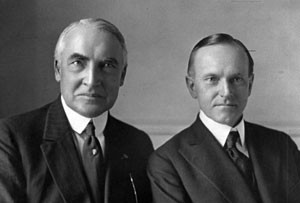 Coolidge as President
Coolidge as President
Despite his conservatism, John Calvin Coolidge supported progressive measures in Massachusetts, being considered a liberal early in his career. He championed women’s and labor rights and was a strong advocate for education, increasing teacher salaries as mayor and proposing a federal Department of Education and Relief as president. He admired Massachusetts as a progressive model for the nation.
As Governor, John Calvin Coolidge faced his defining political challenge: the 1919 Boston Police Strike. His firm stance against the strike defined his political trajectory. He articulated the core principle: “There is no right to strike against the public safety by anybody, anywhere, any time.” This resolute statement resonated nationally, earning him praise, including from President Woodrow Wilson. Senator Charles S. Thomas, a Democrat, lauded John Calvin Coolidge as the type of leader needed to preserve American institutions. John Calvin Coolidge won a landslide reelection victory that fall.
The Boston Police Strike propelled John Calvin Coolidge to national prominence, leading to his nomination as Vice President at the 1920 Republican National Convention.
Upon Harding’s death on August 2, 1923, John Calvin Coolidge became President. When asked his initial thought upon assuming office, he simply replied, “I thought I could swing it.” His swearing-in by his father, a notary public, at his Plymouth Notch home, illuminated by kerosene lamp, became an iconic image of American simplicity and integrity.
John Calvin Coolidge held a Jeffersonian view of limited federal government, emphasizing states’ rights and local governance. “What we need is not more Federal Government but better local government,” he preached, a view not widely shared in an era increasingly drawn to federal resources.
As president, John Calvin Coolidge prioritized efficient administration, focusing on deficit reduction, tax cuts, and government efficiency. He excelled in these areas, notably using the Bureau of the Budget to streamline government spending. During his presidency, the national debt decreased significantly, tax rates were lowered, and the economy prospered, with industrial production and real wages rising and low unemployment. The Revenue Act of 1926, embodying his tax policies, was a landmark achievement.
To promote his economic program, John Calvin Coolidge pioneered the use of radio, delivering semi-annual budget addresses directly to the American people, bypassing political intermediaries and newspaper editors. He became known as America’s first radio president, using the medium to build public support and resist congressional spending initiatives.
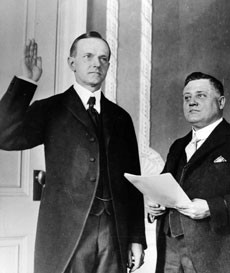 Coolidge addressing the press
Coolidge addressing the press
John Calvin Coolidge also understood the power of print media, cultivating a positive relationship with the White House press corps by providing news and holding regular press conferences, a presidential first. He also accommodated photographers and newsreel reporters, becoming the first president to appear in a talking newsreel during the 1924 campaign.
Despite some characterizations, John Calvin Coolidge was not an isolationist. He recognized America’s new global role, stating in 1918, “We have taken a new place among the nations…this position has come to us with its duties and its responsibilities.”
Internationally, his administration supported the Dawes Plan, facilitated Allied war debt repayments, and promoted the Kellogg-Briand Treaty. While failing to secure US membership in the World Court, his administration improved relations with Mexico under Ambassador Dwight W. Morrow. John Calvin Coolidge made one international trip as president, to Havana, Cuba, in 1928.
John Calvin Coolidge‘s interest in military affairs dated back to his time as a city councilman. As president, he advocated for a modest but sufficient military, guided by “preparation, limitation, and renunciation,” aligning with the strong post-war anti-war sentiment.
The Coolidge era also saw the controversial case of Billy Mitchell, a proponent of military aviation who was court-martialed for insubordination after criticizing military leadership. While John Calvin Coolidge never flew, he recognized aviation’s importance, and the triumphant return of Charles Lindbergh after his transatlantic flight became a defining moment of his presidency and the 1920s. John Calvin Coolidge supported Lindbergh’s efforts to promote aviation.
Military preparedness was important to John Calvin Coolidge, but he believed the nation’s financial health was paramount, viewing debt reduction as crucial to national defense. He also understood that true national strength rested on its people, resources, and economy, focusing on industrial mobilization and war profiteering prevention.
John Calvin Coolidge was committed to veterans, supporting programs for disabled veterans, although he opposed the World War soldiers’ bonus bill, believing it devalued their service. “No person was ever honored for what he received. Honor has been the reward for what he gave,” he stated. He and Mrs. Coolidge hosted veterans at the White House and he famously declared, “The nation that forgets its defenders will itself be forgotten.” He supported the American Legion and dedicated the World War I Liberty Memorial in Kansas City in 1926.
The Coolidge presidency is widely considered successful, presiding over the prosperous and dynamic “Roaring Twenties.” While challenges existed, it was a period of peace and unprecedented economic growth for many Americans, and some consider it the last era of true American freedom.
John Calvin Coolidge achieved his goals of debt reduction, tax reform, and smaller government. His administration, while not focused on extensive new legislation, saw significant measures passed, including the Revenue Act of 1926, the Air Commerce Act of 1926, the Public Buildings Act of 1926, and the Federal Radio Act of 1927.
He also effectively vetoed legislation he opposed, notably the McNary-Haugen farm relief bill, though he was overridden on the Soldiers’ Bonus Bill. Despite vetoes, his popularity remained high, and he could have easily won reelection in 1928. However, he chose not to run, believing his work was complete and the nation was ready for new leadership and approaches, acknowledging, “Perhaps the time has come when we ought to spend money. I do not feel that I am qualified to do that.” He also wisely noted, “It is pretty good idea to get out when they still want you.”
Retirement and Lasting Legacy
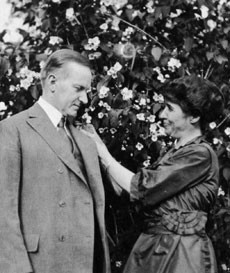 Coolidge in retirement
Coolidge in retirement
On March 4, 1929, John Calvin Coolidge left Washington with public appreciation for his service. Asked about his greatest achievement, he quipped, “minding my own business.” He returned to Northampton, writing his autobiography, newspaper columns, and serving on corporate boards and government committees. He traveled, met with political figures, and even visited Hollywood. While withdrawing from active politics, he offered support to the Hoover administration. However, his health declined, and the deepening Depression troubled him. John Calvin Coolidge passed away from a heart attack on January 5, 1933, at age 60, before the New Deal era. He is buried in Plymouth Notch, among his ancestors.
John Calvin Coolidge‘s legacy is that of a principled leader who embodied integrity, fiscal responsibility, and a deep belief in American values. His “noble character,” as described by his biographer Claude M. Fuess, and his commitment to service continue to resonate, reminding us of the enduring importance of character in public life.
